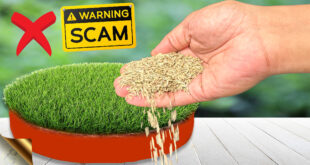Today will look into a very beautiful ornamental indoor plant – the Anthurium Plant. Will look into its important care tips, the common mistakes we tend to do while caring anthurium and also learn how to propagate this plant.
Anthurium, is actually a genus of about 1000 species of flowering plants. The actual botanical name of this plant is Anthurium andraeanum. So at home gardening level we will just call it Anthurium plant.
Common Names of this plant are: tailflower, painter’s palette, flamingo flower, and laceleaf.
The name Anthurium comes from the Greek words anthos, meaning flower, and oura, meaning a tail, actually referring to the spadix. This spadix is actually similar to Peace lily.
Anthurium is a
commonly grown ornamental shade plant or indoor plant with a bright colored
spath or modified leaf with a central spadix. The spath can be bright red or
pink in color. Anthurium is a short
plant with heart shaped leaves.
One most important point to note is that – All parts of the plant are poisonous
to humans and pets. Whether by contact or if ingested orally can cause
problems.
Now lets look at some important care tips while growing anthurium plant whether indoors or outdoors.
- Sunlight: Anthurium prefers indirect bright light and can be kept in shady places and even indoors. But bright light is important to produce flowering and keeping it fully indoors may not produce flowering. So keeping this mind, you can keep indoors at a spot which receives adequate indirect bright light. This plant is actually kept under a 50 percent shade net and its performing well with no leaf burns. Avoid direct sunlight exposure.
- Watering: This point is very important for Anthurium care and the most common mistake gardeners tend to do is overwater this plant. Anthuriums are far more tolerant of under-watering than overwatering, which is one of the most common reasons for a Anthurium plant to die. So what you can do is check once every alternate day by the finger dip method into the soil to check for moisture and if the soil is till damp, never water it now, check again after 1 or 2 days and then water the container.
- Soil: This has to be very well draining soil. If you bring your plant from a nursery and you find its planted in clay rich soil, please remove the clay rich soil by soaking the root ball in a tub of water which dissolves the clay rich soil. Then repot the plant in a larger container in a well draining soil. For anthurium, you can make it more well draining by adding extra perlite of about 20 percent into the potting mix.
- Fertilizer Requirement. I prefer only organic fertilizers once every 3 months. You can add a handful of decomposed cowdung or vermicompost. One more important stuff to add into the soil while repotting or any point of time is 1 or 2 teaspoons of bone meal powder which is rich in phosphorous and can induce flowering for a long period of time.
- Pest Control: Commonly affected by sucking pests like aphids, thrips and mites and also leaves eaten by caterpillars and slugs and snails. Weekly general garden spray of neem oil along with your other plants is sufficient to keep these pests and insects at bay.
- Propagation of Anthurium: It can be grown in many ways like from seeds, by dividing the root ball during repotting and separating into independent plants. You can also root anthurium cuttings in water or soil.
 GKVKs – Gardening Tips and Store Gardening Tips and Store
GKVKs – Gardening Tips and Store Gardening Tips and Store



